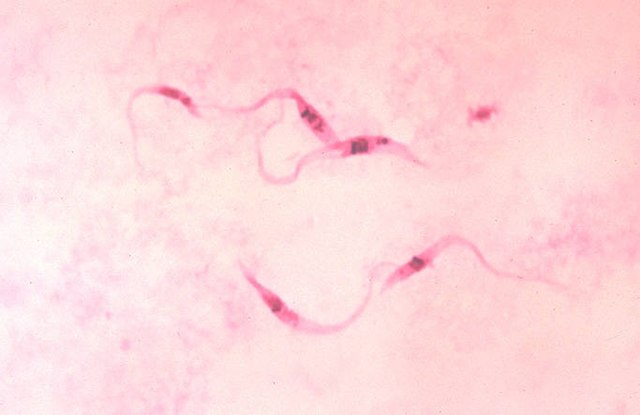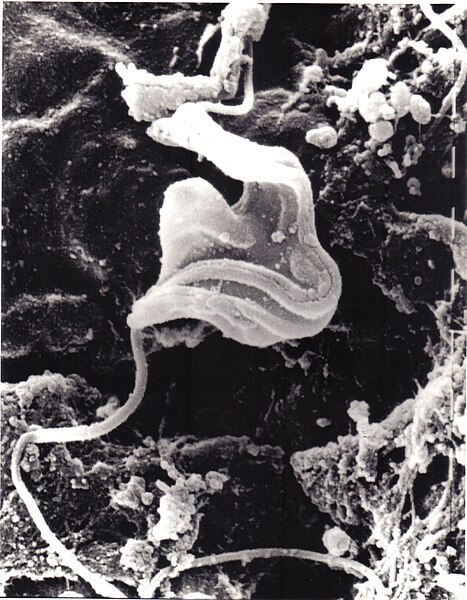Bodo is a genus of microscopic kinetoplastids, flagellate excavates first described in 1831 by Christian Gottfried Ehrenberg. The genus is small, as it has recently been redefined to include only four species. Bodo includes free-living, phagotrophic organisms that can be found in many marine and freshwater environments as well as some terrestrial environments. Being phagotrophic, Bodo feeds on bacteria and other microorganisms that it finds while swimming through its water-based habitats. The swimming-like movement is facilitated by the two unequal flagella that Bodo possesses which arise from an anteriorly located flagellar pocket. Bodo is roughly bean-shaped and is often missed in samples from water or terrestrial environments due to its small size.
Bodo (excavate)
Bodo caudatus
Bodo caudatus cysts
Kinetoplastida is a group of flagellated protists belonging to the phylum Euglenozoa, and characterised by the presence of a distinctive organelle called the kinetoplast, a granule containing a large mass of DNA. The group includes a number of parasites responsible for serious diseases in humans and other animals, as well as various forms found in soil and aquatic environments. The organisms are commonly referred to as "kinetoplastids" or "kinetoplasts".
Kinetoplastida
Cryptobia sp.
Bodo sp.
Trypanosoma sp.






